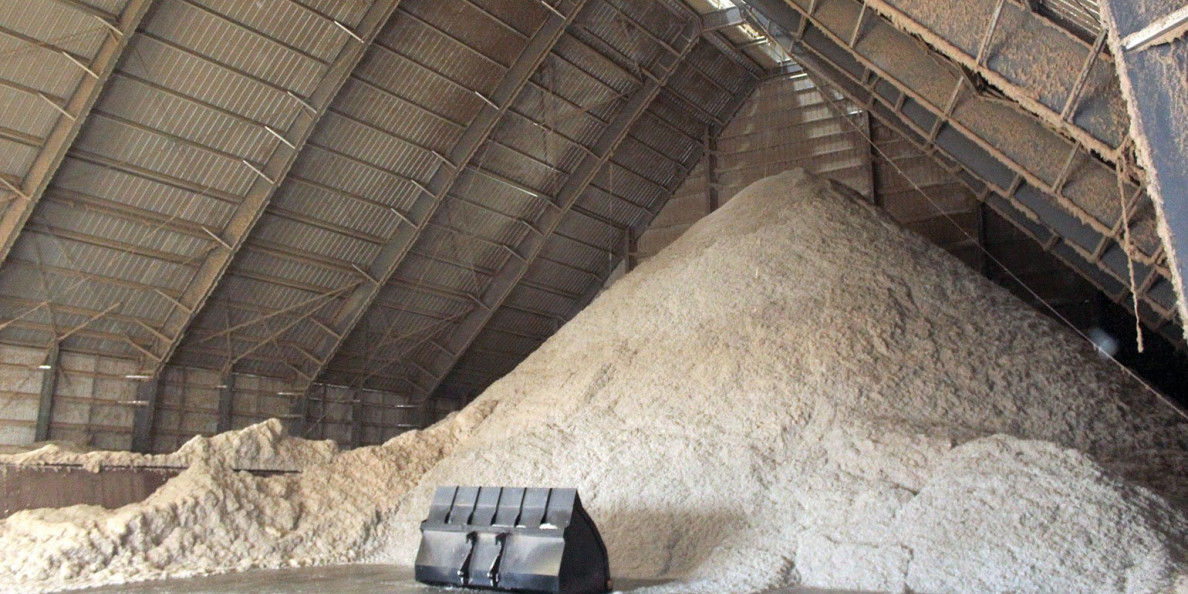The U.S. produced slightly under 21 million bales of cotton in the 2018 crop year. Tom Wedegaertner, Cotton Incorporated’s director of cottonseed research, calculated that volume of seed cotton delivered almost 6.5 million tons of whole cottonseed to the cottonseed market.
Unlike the 2015 crop that added only 4 million tons of cottonseed to the market, that extra 2.5 million tons of whole cottonseed puts extra pressure on the dairy and crush industries — the two main users of whole cottonseed.
Unlike the 2015 crop that added only 4 million tons of cottonseed to the market, that extra 2.5 million tons of whole cottonseed puts extra pressure on the dairy and crush industries — the two main users of whole cottonseed.
“When our industry was having those fairly short crops, we all remember those nice seed rebate checks that were written because cottonseed prices were good,” says Wedegaertner, to a packed crowd of producers and ginners at the Southern Cotton Ginners annual meeting held recently at the Peabody Hotel in Memphis, Tenn. “The crush, of late, has flatlined at 2 million tons a year, so we’ll be looking at the dairy cattle industry to consume that residual volume of cottonseed once again.”
Wedegaertner knows prices for cottonseed will probably slide due to a larger crop. With 4 million tons of cottonseed going into the dairy cow market, he hopes dairy cows stay hungry for the fuzzy feedstuff.
“If we harvest 21 million bales of cotton from the crop that’s about to be planted, that will equate to 7 million tons of cottonseed flowing into cottonseed houses at 516 gins across the country,” adds Wedegaertner. “Once you take off 2 million tons for the crush, that will leave 5 million or so tons to push toward the dairy industry, but you have to remember, a dairy cow can only consume about a half a ton of whole cottonseed per-year.”
With 5 million tons of extra cottonseed, 10 million dairy cows are needed, but there are currently only about 9 million in the U.S. “Our goal is to somehow get dairymen to feed their cows higher levels of cottonseed,” says Wedegaertner. “We’d really like to see them feeding each cow about 5 pounds of cottonseed per-day rather than the 3 pounds the average cow eats currently.”
Genetics, Protein, and Research
Wedegaertner told his board most of the feeding research on which he relies to develop his programs was conducted back in the late 1980s. Like most animals, the genetic potential of dairy cows has changed a great deal since then, and so have their feeding practices.
“If you look through the Journal of Dairy Science, you’ll see most of the cottonseed-related research is being done by the palm oil industry and the feed industry folks who are looking for a substitute feed for cottonseed because it’s gotten so expensive,” explains Wedegaertner. “Twenty years ago, nobody believed a dairy cow could produce more than 100 pounds of milk per-day, or you could feed them more than 5 percent fat — well, that’s all changed.”
Wedegaertner wants research confirming how today’s cows are producing 120 and even up to 140 pounds of milk each day, and instead of the 5 percent fat recommended by nutritionists in past years, many are advising up to 10 percent be added to their diet. “Cottonseed fits in very well with that kind of recommendation, and I want confirming science to back it up for our marketing programs,” says Wedegaertner.
Wedegaertner also says the single biggest factor limiting the value of protein in cottonseed is gossypol. It limits the amount of cottonseed meal that can be fed to a variety of animals, including chickens. When high levels of gossypol are ingested, it binds to the animal’s blood and makes it difficult for oxygen to be carried throughout the bloodstream.
World demand for protein is on the rise, as is the world’s population. “You can hardly sit down to a meal these days without some type of chicken product being served,” adds Wedegaertner. “As our population continues to escalate, demand for feed chickens and laying hens will increase, and we want cottonseed to capture some of that expanding feed market.”
Ultra-low Gossypol
Another development that should open market opportunities for cottonseed is the breakthrough in Ultra-low Gossypol (ULG) cotton. Even though glandless cotton has been around for decades, it has never been commercially viable because insects destroy it in the field.
“Gossypol is a naturally-occurring toxin, so it’s a great deterrent to a wide range of cotton pests,” says Wedegaertner. “Well, we finally made a breakthrough thanks to biotechnology, and scientists can now significantly-lower gossypol levels in the plant itself while blocking its production in the plant’s seed.”
The next question to consider is what will be done with this development. Since cottonseed and cottonseed meal are mostly being fed to cattle (whose feed rations can be the lowest on the protein value chain), Wedegaertner wants to move cottonseed up the chain to chickens, pigs, and aquaculture.
“Because we can produce cottonseed without those dangerous levels of gossypol, we’re looking at replacing fish meal which commands a price around $1,400 a ton,” adds Wedegaertner.
USDA granted ULG a “deregulated” status last September, but FDA has yet to tender its stamp of approval. Once that is given, Wedegaertner believes backcrossing ULG into conventional varieties will occur.
“Once seed increase efforts begin, we would hope to see ULG plants in fields within three years,” says Wedegaertner. “We also instituted some human feeding studies with cottonseed oil compared head-to-head against olive oil, and the results were outstanding.”


